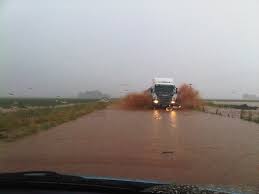Weather conditions play a crucial role in determining road safety. In the Northern Region of Ghana, the impact of various weather phenomena is particularly significant. The region is rich in cultural diversity and natural beauty but is also faced with challenges related to its climate, which can significantly influence the safety of its roadways.
The Northern Region experiences distinct weather patterns that vary dramatically throughout the year. The wet season, characterised by heavy rains and flooding, can transform roads into treacherous paths, while the dry season brings dust storms that reduce visibility and create hazardous driving conditions. These weather extremes not only affect motorists but also pose risks to pedestrians, cyclists, and all road users.
As we explore this essential topic, we will analyse how adverse weather conditions contribute to road accidents, the vulnerabilities different groups face, and the challenges posed by inadequate infrastructure.
Join us on this journey as we uncover the vital link between weather and road safety in the Northern Region of Ghana. Together, let’s strive for safer roads for all.
Weather Conditions In the Northern Region
The Northern Region of Ghana experiences distinct weather patterns that significantly influence road conditions:

1. Wet Season (May to October):
- Characterized by heavy rainfall and thunderstorms.
- Frequent flooding can lead to road closures and poor visibility.
2. Dry Season (November to April):
- Marked by hot temperatures and dusty Harmattan winds.
- Dust storms can severely reduce visibility and create slippery road conditions.
- Roads may become cracked and damaged due to heat, affecting driving safety.
Impact of Weather Conditions on Road Safety
1. Increased Accident Rates
a. Wet Conditions:
- Poor road drainage can lead to water pooling, increasing the risk of skidding
- Reduced visibility during heavy rains can impair drivers’ judgment.
b. Dry Conditions:
- Dust can obstruct visibility, making it difficult for drivers to see other vehicles or pedestrians.
- Hard, cracked roads may lead to vehicle instability, especially for motorcycles and bicycles.
2. Slippery and Dusty Road for Vulnerable Road Users
a. Pedestrians:
- They are often at risk during heavy rains, as they may need to navigate flooded areas.
- Poor road conditions can lead to slips and falls, especially in muddy areas.
b. Cyclists and Motorcyclists:
- Increased likelihood of accidents due to loss of traction on wet or dusty roads.
- May face challenges in maintaining balance during strong winds.
3. Infrastructure Challenges
a. Road Quality:
- Many roads in the Northern Region are unpaved or poorly maintained, exacerbating the effects of weather.
- Inadequate drainage systems can also lead to rapid deterioration of road surfaces.
b. Traffic Management:
- Limited resources for traffic management during adverse weather conditions can contribute to chaos and accidents.
READ ALSO: Impact of Driver Behaviour on Accident Rate in Northern Ghana